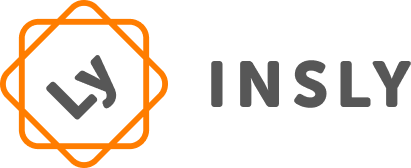The second part of our recap of the insurtech influencer interviews will focus on the biggest obstacles holding back insurance market disruption and which fields of insurtech will attract the most funding in 2021.
Our gratitude goes to all the influencers we worked with! Without these amazing people, we couldn’t bring you such insightful stories. If you missed out on some of the previous stories, don’t forget to check them out: Ed Halsey, Jan Kastory, Paolo Cuomo, Rick Huckstep, Robin Kiera, Roger Peverelli, Sabine VanderLinden, Spiros Margaris, Steve Tunstall.
What is the biggest obstacle for insurance start-ups that holds back market disruption and meaningful change?
This question brought many insightful ideas to the table and is probably the main learning point to the insurtech industry.
Funding was the main topic reflected in many of the influencers’ interviews. A critical issue is the difficulty for start-ups to get funding, especially in seed and round A, unless you happen to be in the right circle. Another obstacle is the reluctance of incumbents to partner directly with small companies, since they rather prefer to develop solutions themselves – though, often fail. The scale benefits of incumbents make them hard to beat and could make it almost impossible for start-ups to really disrupt the market all by themselves within the next decades.
Insurtech start-ups earn money by offering mostly either B2B Software-as-a-Service for insurers or through commissions on insurance sales. Now, B2B SaaS sales cycles take up to 24 months and only a few carriers in Europe can provide insurance capacity to start-ups, especially in smaller markets. This time loss is a major obstacle for start-ups that don’t have cash for this long perspective.
Some of the obstacles for insurance start-ups also include convincing the insurer business of their ability to execute, recruiting the right team, and being patient – in insurance, you have to invest in long-term relationships. In fact, the biggest obstacle for start-ups could be the spread of expertise that they need with such minimal funding.
For start-ups and incumbents, the problem also lies in the contradiction between the way insurers work and the regulatory environment they operate in. This restricts disruptive innovation, because the regulations force a traditional insurance approach, yet also protect against bad behaviours.
A fundamental issue that influencers emphasised was that most insurers have not found a way to excite the end consumer or salesperson to raise the interest in our products and services. Why are consumers standing in line for a phone that serves them for two years, but not for life-saving products that will help them for 20 years?
Which insurtech field will be the most impactful and attract funding in 2021?
An astonishing fact is that only in June 2021, the insurtech funding was bigger than during the entire 2020, and there are five insurtech unicorns in Europe. The main driver of funding in 2021 will be less the field and more the revenue model. The most interesting are those start-ups and scale-ups whose models are around subscription revenue streams that can grow into more classes or activities.
We see a few early-stage, but a lot of later-stage investments, which is not surprising considering the innovation life cycle. In addition, a big part of funding continues to go to the insurtech carriers, which makes sense, because they need capital to scale. We should also keep an eye on insurtechs that give us access to new data streams, AI and other data capabilities, new customer propositions, and new ways to monetise all that data. This is probably where the funding will flow.
The top four areas where insurtechs are building disruptive innovation include healthtech, property and homeowner platforms, mobility-related tech, and cybercrime. Even more, health and connected living are key areas insurers should tap into to reimagine customer relevancy and where they can add value.
Disruption will not happen without automation. Whether AI, robotic process automation, machine learning, or language processing, any tech that automates the manual insurance operation is going to get traction. The majority of insurance processes are routine and repetitive and automation tech can and will replace human effort in 99% of the insurance value chain. Decentralised financing will take this further by not only completely automating insurance processes, but disintermediating the insurance ecosystem, removing redundant insurance providers from the value chain.
Looking at the value chain, less and less proportion of capital is being placed in distribution. In fact, the focus is turning to distribution technologies. There’s also a growing interest in risk underwriting and actuarial science such as new data and algorithms, especially in the UK. Claim and fraud tech are growing and new products for underinsured customer segments such as freelancers or SMEs attract funding. The real winners will be those offering focused product distribution to highly marketable demographics of buyers.
We hope you enjoyed these exciting interviews – we sure did! We have some new interesting industry stories cooking, but let’s give that idea some more time…



